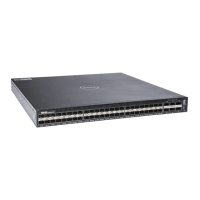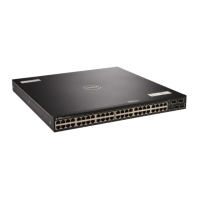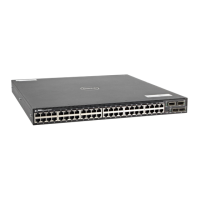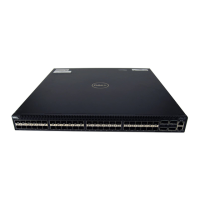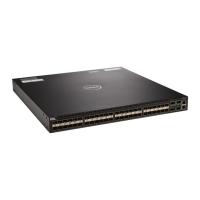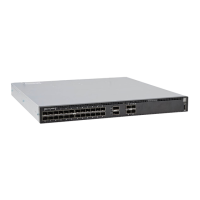6 3.00 256
7 3.00 256
Using a Pre-Defined Buffer Profile
Dell Networking OS provides two pre-defined buffer profiles, one for single-queue (for example, non-quality-
of-service [QoS]) applications, and one for four-queue (for example, QoS) applications.
You must reload the system for the global buffer profile to take effect, a message similar to the following
displays: % Info: For the global pre-defined buffer profile to take effect, please
save the config and reload the system..
Dell Networking OS Behavior: After you configure buffer-profile global 1Q, the message displays during
every bootup. Only one reboot is required for the configuration to take effect; afterward you may ignore this
bootup message.
Dell Networking OS Behavior: If you configure 1Q, save the running-config to the startup-config, and then
delete the startup-config and reload the chassis. The only way to return to the default buffer profile is to
remove the 1Q profile configured and then reload the chassis.
If you have already applied a custom buffer profile on an interface, the buffer-profile global command
fails and a message similar to the following displays: % Error: User-defined buffer profile
already applied. Failed to apply global pre-defined buffer profile. Please remove
all user-defined buffer profiles.
Similarly, when you configure buffer-profile global, you cannot not apply a buffer profile on any single
interface. A message similar to the following displays: % Error: Global pre-defined buffer profile
already applied. Failed to apply user-defined buffer profile on interface Te 1/1.
Please remove global pre-defined buffer profile.
To apply a predefined buffer profile, use the following command.
• Apply one of the pre-defined buffer profiles for all port pipes in the system.
CONFIGURATION mode
buffer-profile global [1Q|4Q]
If the default buffer profile dynamic is active, Dell Networking OS displays an error message instructing you
to remove the default configuration using the
no buffer-profile global command.
Sample Buffer Profile Configuration
The two general types of network environments are sustained data transfers and voice/data.
Dell Networking recommends a single-queue approach for data transfers.
Example of a Single Queue Application with Default Packet Pointers
!
buffer-profile fp fsqueue-fp
buffer dedicated queue0 3 queue1 3 queue2 3 queue3 3 queue4 3 queue5 3 queue6 3
queue7 3
buffer dynamic 1256
!
buffer-profile fp fsqueue-hig
Debugging and Diagnostics 1251
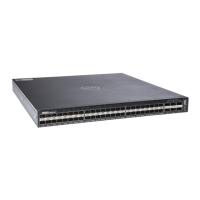
